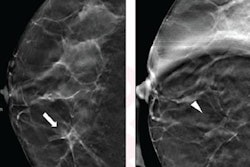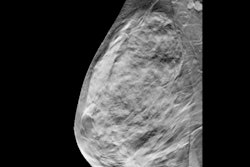
Fatigue endured by less-experienced radiologists later in the day may lead to more recalls in breast imaging when reading digital breast tomosynthesis (DBT) images, according to research published January 11 in Radiology.
A team led by Michael Bernstein, PhD, from Brown University said their findings suggest that radiologists are more likely to recall patients from screening DBT when images are interpreted later in the day versus earlier. The group found that for every additional hour in reading time, recall odds increased by 7%.
"Our findings are consistent with prior work in radiology and other settings, suggesting that task performance is dependent on the time of day, which is likely driven by fatigue," Bernstein and colleagues said.
Psychology studies have shown that fatigue hinders performance in the medical field, and radiologists are no exception. Previous research suggests that radiologists are more accurate in interpreting images during earlier work shifts than later.
DBT has grown in use since it became commercially available in the U.S. in 2011, with researchers touting its ability to provide greater detail than conventional mammography. DBT systems can acquire hundreds of images per bilateral screening examination, while such screening with digital mammography results in four images per exam.
Bernstein and colleagues wanted to look at whether the time of day affects mammography recall rate and false-positive rate in 2D digital mammography and 3D DBT. They also looked at whether radiologist experience is associated with the potential time-of-day effect.
The team retrospectively looked at data from 97,671 screening mammograms read by 18 radiologists between January 2018 and December 2019 at one site. Out of these, 40,220 images were from DBT while the remaining 57,451 were digital mammograms. Nine radiologists had five or fewer post-training years of experience while the other nine had more than five post-training years.
The overall recall rate for digital mammography was 10.2% compared to a rate for DBT of 9%, a difference that was statistically significant (p = 0.006). The false-positive rate also differed significantly, with digital mammography at 9.8% and DBT at 8.6% (p = 0.004).
The study authors found that recall odds increased 11.5% (odds ratio, 1.12) for the less-experienced radiologist group with every hour when using DBT. However, this wasn't the case for using digital mammography, for which the odds ratio of a recall was 1.09.
The group of more experienced radiologists, meanwhile, showed no evidence of recall increase when using DBT (odds ratio, 1.02) or digital mammography (odds ratio, 1), a difference that was not statistically significant.
However, DBT had a higher true-positive rate than digital mammography regardless of the time of day. The researchers said this may be because more junior radiologists appeared to compensate for their fatigue later in the day when using DBT by recalling mammograms, more of which were false-positive findings.
They also said less-experienced radiologists may need more cognitive resources than their more experienced colleagues, and that performance could improve with certain workplace changes. These include limiting the number of hours when mammograms are read or introducing regular breaks to minimize cognitive fatigue.
"To rule out a potential cohort effect, researchers could examine how time of day affects radiologists differentially as they gain experience in a longitudinal design," the study authors wrote. "Subsequent experimental studies are needed to test strategies for mitigating the time-of-day effect observed here."




















